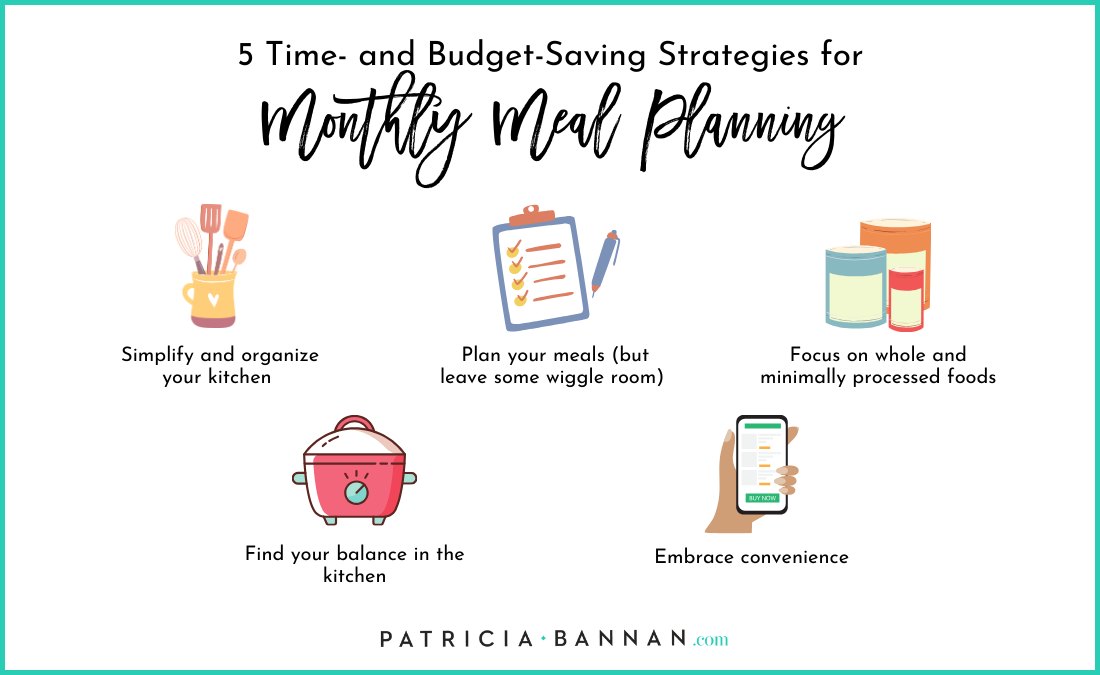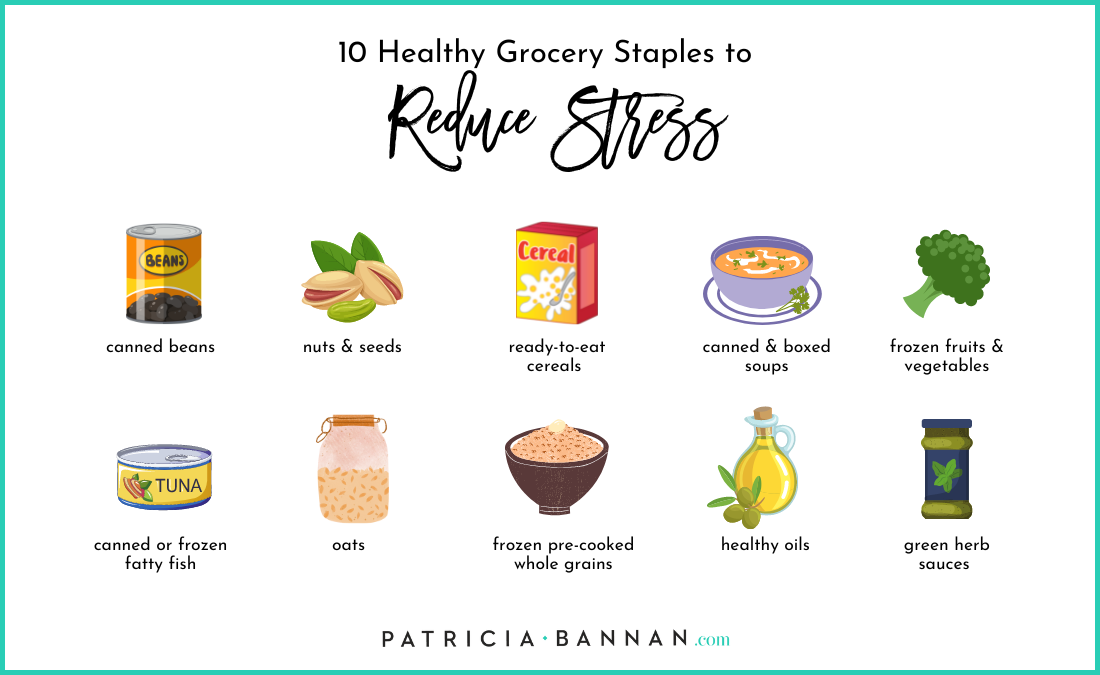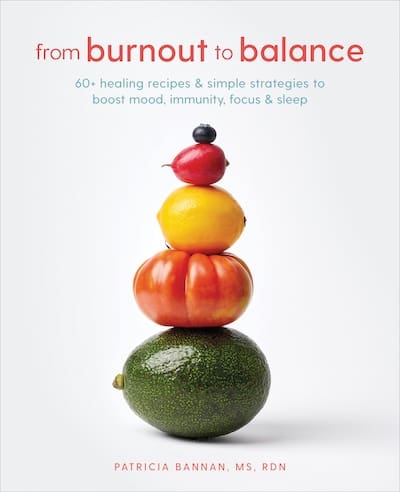Meal planning can be a time-consuming and overwhelming task. Especially if you’re trying to balance it with work and caring for a family. Minimize your load with these 5 key strategies for monthly meal planning.
Did you know we make more than two hundred decisions a day—just about food? I love being a mom and wife. And I love my work. But I, like most women, could really use another, thirty-six hours in a day—and maybe a clone who can help with the laundry, cooking, and the dishes.
My cost for trying to “have it all” was burnout. And I’m not alone. We’re paying the price for buying into the idea that we have to push through, bear the burden alone, and excel in every area of our lives at the time same. So I’ve broken down the areas of life that can feel more manageable with certain strategies.
And one of these is monthly meal planning. I’m here to show you how to adopt a “back to basics” approach by planning ahead to avoid burnout. Simplify your life, starting in the kitchen, with these 5 time- and budget-saving food strategies.
1. Simplify and organize your kitchen
One of the most important first steps to monthly meal planning is setting the stage to make cooking and preparing food more enjoyable and less stressful. The rest can fall into place once you’ve taken the time to make your kitchen a calm space.
Take a quick look around. Maybe your shelves are stocked with food, but you feel like there’s never anything to eat. Your pots and pans are mismatched. Your storage containers never have lids that fit. This makes meal prep, cooking, and cleanup a pain.
Streamline and organize your kitchen. Declutter your pantry, freezer, and fridge, too. If you’re like me, seeing a project through to the end feels rewarding (even when you really should be doing something else).
2. Plan your meals (but leave some wiggle room)
Start by developing a list of your favorite recipes categorized by types:
- Breakfast
- Lunch
- Dinner
- Snacks
- Desserts
Prepare an overview of the next 4 weeks, including all of the known commitments. If strict plans stress you out, work these recipes into your week once you know what commitments lie ahead. Perhaps you need a few ideas in between Taco Tuesday and Pizza Friday. You can also swap things as you see fit when the days or weeks arrive.
Remember to also include some easy-to-make meals in your plan, like salads, wraps, or sandwiches. Keep healthy, pre-made options in your kitchen for days when you have no energy to cook.
3. Focus on whole and minimally processed foods
Many of the (ultra) processed foods sold to us as time savers are really more like high-interest loans. These shortcuts can contribute to our burnout, so replace them with whole foods that help nourish your body instead of depleting it.
Find recipes that include nutrient-dense, minimally processed pantry staples like canned fish, microwavable whole grains, and jarred minced garlic. Keeping these 10 healthy grocery staples on hand is a great start. It may be time to rethink making pasta sauce from scratch and soaking your beans overnight, especially when you’re frazzled.
 4. Find your balance in the kitchen
4. Find your balance in the kitchen
We all have different interest levels, skill sets, and availability when it comes to cooking. If baking sourdough bread on the weekend is your way of recharging, that’s great. However, if cooking generally adds stress to your life and a midday hike is more your speed, grab a yogurt with granola and hit the trails.
Make the most of quick-cook appliances like the Instant Pot and Air Fryer. Or befriend your good old slow cooker for easy, one-pot meals. These all require minimal preparation and can cook while you’re busy with other tasks.
5. Embrace convenience
Don’t set yourself up for failure with an overly ambitious meal plan. Leave room for dining out or ordering in occasionally. It’s okay to have simpler meals on busy days. Get creative with leftovers. Transform last night’s dinner into a new dish, like turning roasted vegetables into a stir fry or using grilled chicken in a salad.
If it’s in your budget, explore grocery delivery options as well. This can save you an hour or more a week. Plus, many apps allow you to add previous deliveries to your cart, so you can remove any guesswork about what you may need for meals in the coming weeks.
Getting Started with These Monthly Meal Planning Strategies
These 5 strategies are ones that I recommend coming back to at the start of each month. They may seem simple or straightforward, but life is unpredictable. Don’t stress if your plan doesn’t work out perfectly. Adapt and adjust as needed. At the end of each month, evaluate what worked and what didn’t. Adjust your strategies based on your experiences to continually refine your approach.
Don’t be too hard on yourself. Consider taking a break and enjoying a meal from your favorite restaurant guilt-free. The goal of meal planning is to make your life easier and healthier. Find a rhythm that works for you and your family, and always remember to look for the fun in it!
For additional monthly meal planning strategies, weekly meal plans, recipes, and more, check out my book, From Burnout to Balance.




 4. Find your balance in the kitchen
4. Find your balance in the kitchen



